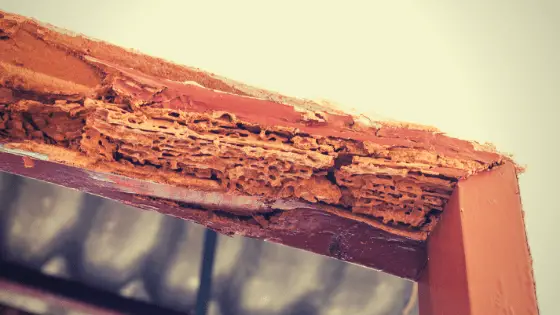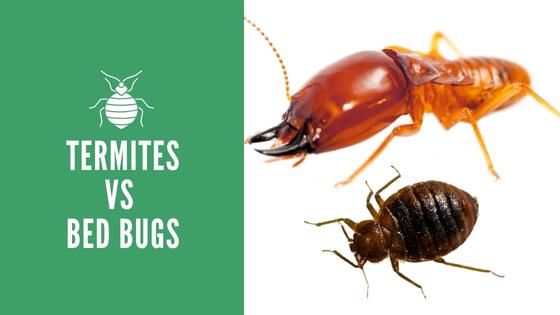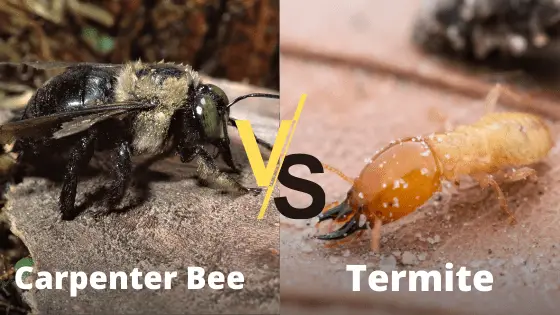Termites in Kitchen Cabinets
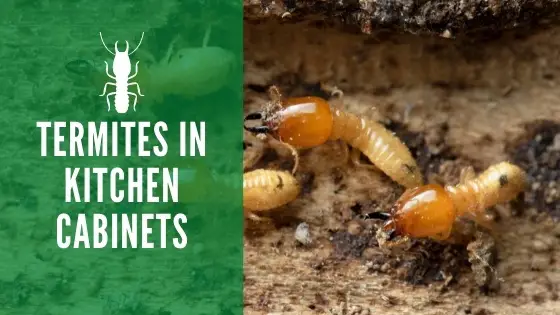
Termites are enough to strike a terror in the mind of any homeowner owner. Repairing the damage from their destructiveness can be costly. They can cause a decrease in home value, and unfortunately, they might be lurking underneath your kitchen cabinet. Let’s explore how to know if you have them and what to do if you find these destructive little creatures.
Why Do Termites Like Kitchen Cabinets?
There are approximately 2,300 termites in the world, and many of them live in tropical and subtropical regions. Approximately 41 species of termites live in the United States, and some of them are adapted to survive winters in northern climates. Subterranean termites, ones that live just below the surface of the earth, are the ones that you have to be concerned about most when it comes to protecting your home.
The two of the main types of termites are drywood termites and dampwood termites. Their name provides clues as to the type of wood that they prefer to eat. Dampwood termites are the most common types found underneath kitchen cabinets. They prefer environments that are dark and moist.
You will also often find them in the walls around plumbing pipes, where condensation keeps the wood moist. Steam and moisture from cooking make your kitchen counters a soft treat for them.
Signs of Termites in Kitchen Cabinets
Termites consume wood and create tunnels or Burrows as they do. They use these burrows to establish a colony and raise a family. One sign that you might find if you have termites in your kitchen cabinets is the presence of termite feces, which resemble little tiny pellets in places where they feed and nest.
You also might find small piles of fine sawdust. If the infestation is bad, you might also find holes or decayed or rotten wood around the nest area.
You also might see flying or wingless termites around your kitchen cabinets. One of the main places to look is underneath your sink, where the pipes come into the house.
Another thing you might see is swarmers’ wings laying around your cabinets. Swarmers are winged termites that build a new colony, and once it is established, they drop their wings and live as crawling insects.
Some species of dampwood termites must have access to soil, while others can live perfectly fine in dampwood without contact with the soil. One of the most common sources of infestation is wood in your home that is in contact with the soil, which might leave you wondering how they are in your kitchen cabinets. The answer is that most termite infestations occur one to two years after new cabinets are put in place.
The main source is plywood infested with termites. They are tiny, and carpenters might not notice them. Termites can lay dormant for an extended period, and once they become active again, you can have a sudden termite infestation underneath your kitchen cabinets.
Once cabinets are installed, the environment becomes moist, and the warmth in your house creates the perfect place for the eggs to hatch.
How Do I Get Rid of Termites in My Kitchen Cabinets?
A termite infestation is serious business, and if you see any signs of termites, you need to act quickly. The colony can grow fast, and the more termites there are, the faster the destruction occurs. One of the best ways to prevent termites in your kitchen cabinets is not to provide them with the environment that they crave.
This means making sure that the areas underneath your sink remain dry and that you fix any small leaks that might occur. Also, don’t put wet dishes and utensils away in your drawers because the water evaporates and creates the perfect wet environment for termites.
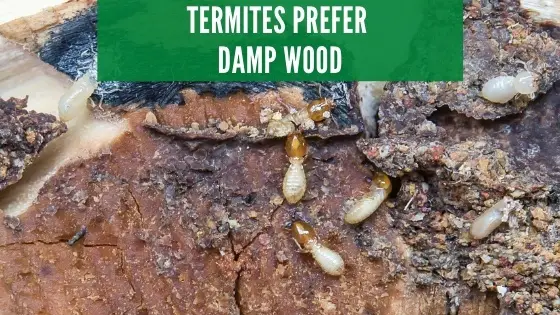
If you do find that you have termites, you need to take a two-pronged approach to get rid of them. First, you need to get rid of the termites at their source. After that, you need to find a way to keep them away. Boric acid and Borax are two of the most common ways to get rid of termites in any part of their home.
Borax is a natural mineral, and boric acid is a by-product of processing borax. To use them, you need to apply a fine dusting of the fine, white powder to the area where you see the termites. It is important only to use a fine dusting because if the termites see a pile, they will walk around it. You want them to walk through the powder without realizing it accidentally.
Borax and boric acid work because the powder sticks to the legs of the termites. When they go back to the colony and clean themselves, it enters their digestive tract and can cause digestive problems and problems with their nervous system.
Other termites will help clean them, too. In a few days, they will die due to dehydration. It does not kill them on contact, but you will see a reduction in the population within a few days.
Depending on how bad your infestation is, you might need a professional to apply the boric powder effectively. It is also recommended to use borax with other solutions that can go deeper into the wood and completely cover an area.
How Do I Protect My Cabinets from Termites?
The first thing that you should do, if possible, is to make sure that your cabinets are made from wood that has been treated for termites. The second thing is to make sure to eliminate any sources of moisture near the wood to the extent possible.
Even if you do not see any termites in your new cabinets, many people choose to keep Borax and boric acid dust out around their new cabinets as a preventative. That way, even if termite eggs do hatch, the problem will be taken care of before it gets started.

Aside from these measures, several essential oils have been shown in studies to help repel termites, keep them away, or even kill them on contact. Here are a few of them that you might try.
- Cinnamon oil
- Clove oil
- Garlic oil
- Tea tree oil
- Orange oil
Remember that if you use essential oils, you must refresh them occasionally because the oils will evaporate over time. Also, these oils will not solve the entire problem, and you must use something like boric acid or Borax to get rid of the colony at its source.
If you have termites, it is important to get rid of them before you start repairing your home. Otherwise, they will just come back and destroy your new cabinets, too. If you take a comprehensive approach to get rid of termites that involves something to destroy the colony and then something to keep them away, you can rid yourself of termites completely.
Sources:
https://www.pestworld.org/news-hub/pest-articles/termites-101-a-guide-to-different-termite-species/
https://ucanr.edu/blogs/blogcore/postdetail.cfm?postnum=44033

